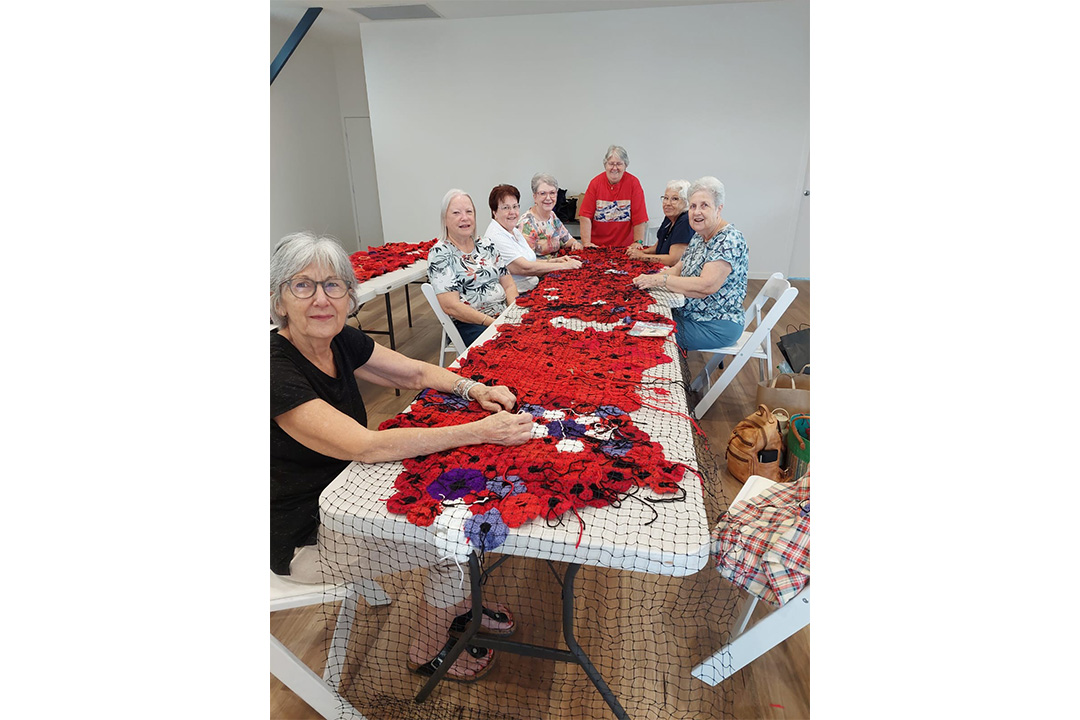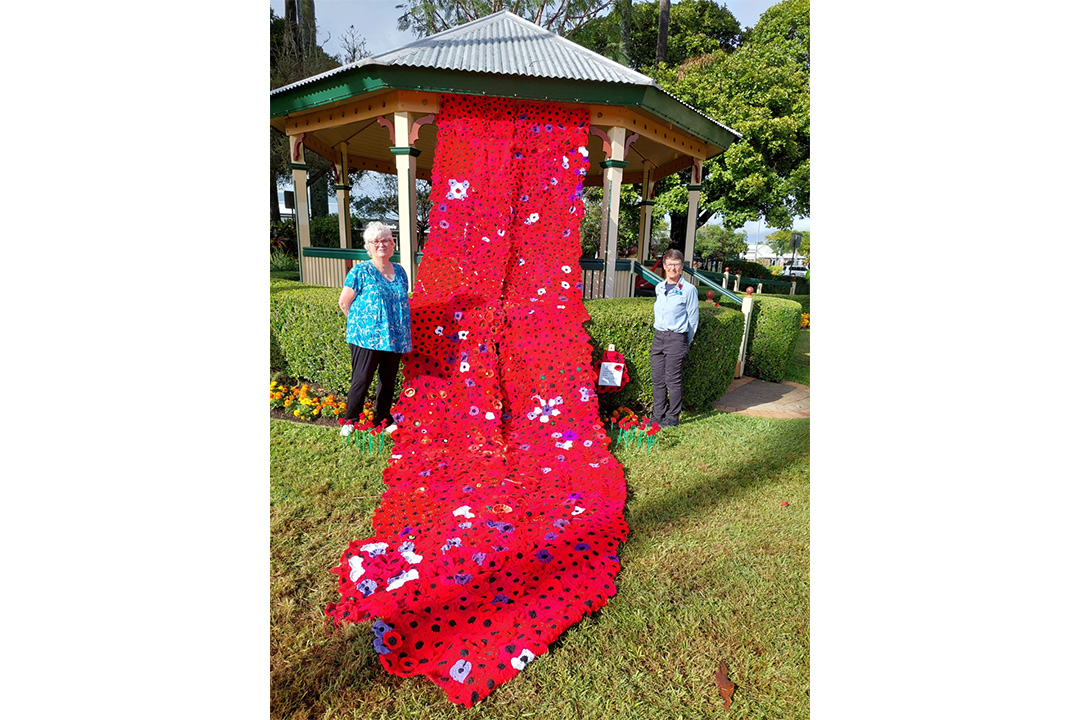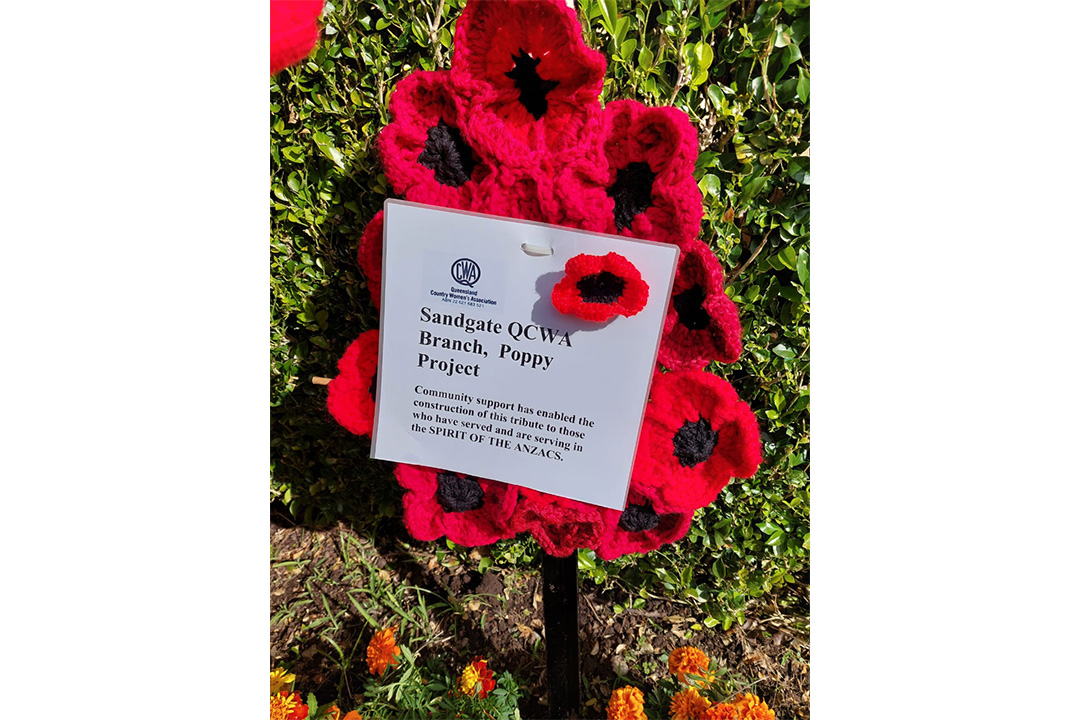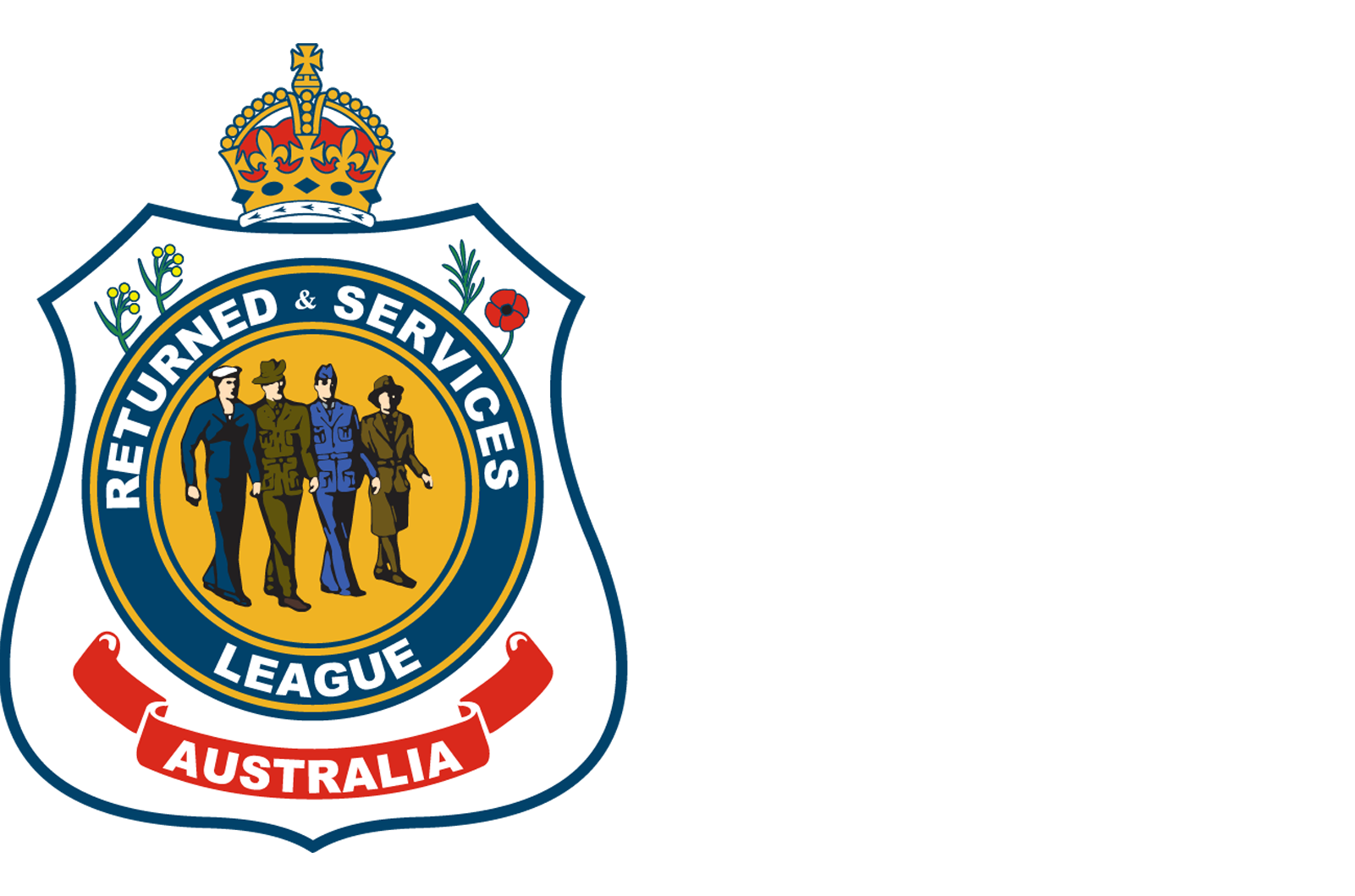20 October 2025
4,000 handmade poppies knit community together in remembrance
Stitched together to form 12 square metres of cascading blankets, the striking display is one of many inspired by the 500 Poppies Project, which have adorned memorials, parks and former battlefields around the globe.
Spearheading Sandgate’s poppy display is the local branch of the Queensland Country Women’s Association (QCWA), which regularly joins forces with Sandgate RSL Sub Branch to support the local veteran and wider community.
“Leading up to Remembrance Day last year, I saw on Instagram this tree with a spectacular blanket of poppies falling down. And I thought, I wonder if the QCWA ladies would like to do something like this?” Sandgate RSL Sub Branch Secretary Andrew Law explains.
The QCWA quickly agreed.
“I stayed in a very small village in Yorkshire, England where they did a beautiful display of knitted poppies for Remembrance Day last year,” Sandgate QCWA Branch Poppy Project Coordinator Anne Jenkins says.
“I thought, we could do this. If a tiny village can do this, we can too.”
A story behind every poppy
From there, Anne’s team swung into planning mode.
"There's quite a lot of logistics involved. You've got to find out how to construct it, where you're going to place it, get everybody's permission and put the word out for volunteers,” Anne explains.
They set a goal to craft, collect and assemble 2,000 poppies for ANZAC Day. Thanks to some “enormous” media coverage, the poppies came flooding in.
“We were blown away. We had poppies arriving from everywhere: Crows Nest, Gold Coast, Hervey Bay, Canberra, Victoria, South Australia, and all over Brisbane,” Anne says.
“Even Quilpie, which was badly flooded at the time, posted a parcel. They wanted to help because CWA was supplying food vouchers, bedding and that sort of thing for their community.”
By the end of February, Anne’s team had an estimated 4,000 poppies – including 3,000 newly handmade by volunteers, and another 1,000 donated from a 2018 display at the Australian War Memorial.
Anne says that every parcel of poppies had a story.
“We had somebody who did it in remembrance of their father, who had served with the British and then the Australian Army,” she shares.
“We had a 15-year-old migrant from Chile who’d just moved to Brisbane, didn’t know anybody and taught herself to crochet. We had a lady who is fairly confined for much of the time because of her disabilities and her husband's dementia.
“We made some connections that we just didn't expect, and now some people who made poppies are volunteering for us in other ways.”
Anne says it was “a valuable lesson that you need to listen to people”.
“Something like this brings the community together and encourages members of the community to reach out.”
Sandgate QCWA Branch members constructing the panels of hand-crafted poppies
A special achievement
With ANZAC Day fast approaching, it was “all hands on deck” to stitch the poppies together.
“It’s not very easy because the poppies are all sorts of sizes, shapes, and also different knits and crochets. Four of us worked all through Easter,” Anne says.
Anne’s team managed to hand-stitch 2,000 poppies together to create the ANZAC Day display, with the remaining 2,000 poppies to be added for future commemorations.
Despite pouring rain on ANZAC Day – and a last-minute race to haul the poppy blankets to shelter – nothing could dampen the effect of the display.
“With the floodlights on, the wool sort of glows this beautiful red glow. They looked spectacular,” Anne says.
According to Andrew, the public response was “brilliant”.
“The community loved it. It was something they hadn't seen before other than on television or social media, so it's given them pride. They go, ‘Wow, look at this, this is really cool – and it comes from the local community’,” he says.
“And while the poppies were very much a presence of the ceremony, they didn't also take away from the significance of ANZAC Day.”
“We were amazed at the community response. We ourselves were very taken with the project,” Anne says.
“All of us had parents who served, some are married to retired servicemen, and some of us have serving members in our immediate family. So that made it very special for us, and I think we felt that we'd achieved something for our community.
“There were so many people in the park to see it. And we were able to explain the meaning of the poppies, which we discovered that a lot of the children didn't know. It was an education.”
Sandgate QCWA Branch Treasurer Margaret Hay (left) and Vice President and Poppy Project Coordinator Anne Jenkins (right) with the completed display in Sandgate War Memorial Park on ANZAC Day 2025.
A closer-knit community
Since ANZAC Day, the poppy display has also featured in local Vietnam Veterans’ Day and Victory in the Pacific commemorations.
Construction is now underway on a third blanket of 1,000 poppies, and the QWCA hopes other RSL Sub Branches will be able to use the display for future events.
For Anne and Andrew, the poppy display is more than a heartfelt gesture of remembrance. It also symbolises the stories and connections that brought it to life – and brought the community closer together.
“A real community project like this is good for everybody,” Anne reflects.
“I felt humbled by people’s generosity with their time and touched by participants’ personal stories and memories.
“I think it brought us a lot of joy and fulfilment. We said to Andrew, your Sub Branch members have a connection to us now, which is more permanent than us just using the Sub Branch hall.”
Andrew says he’s proud of the project.
“I reckon it's awesome because it's two charity organisations working together,” he says.
“All charity organisations are about the welfare of the community, and to be able to work arm in arm with someone as established as the QCWA, it's first-rate.
“I just love that it's a way of connecting people, which is so important. All these poppies have come from so many other communities, and are all sewn into one. It gives you this physical reminder that you're part of one community.”
Signage on the poppy display on ANZAC Day 2025.
A long legacy
Anne, whose son-in-law serves in the Defence Force, hopes the poppies’ legacy will be long.
“Hopefully the people who made those poppies for us are going to say, ‘I'll go and pay my respects again’ on ANZAC Day or Remembrance Day. And it becomes part of their tradition and their commemoration of all those who fought for our freedoms.
“People need to remember that there are still serving members who have gone through more since the last war. They make sure that we’re a free country, and I think that's sometimes forgotten.
“Behind every uniform, there's a person – and a story. Like the poppies.”
Remember to remember
This Remembrance Day (11 November), join millions worldwide in honouring those who died in service to their country.
Attend an RSL Sub Branch service, observe a minute’s silence at 11am or donate to the Poppy Appeal, and help keep our service people’s legacy alive.
Lest we forget.




